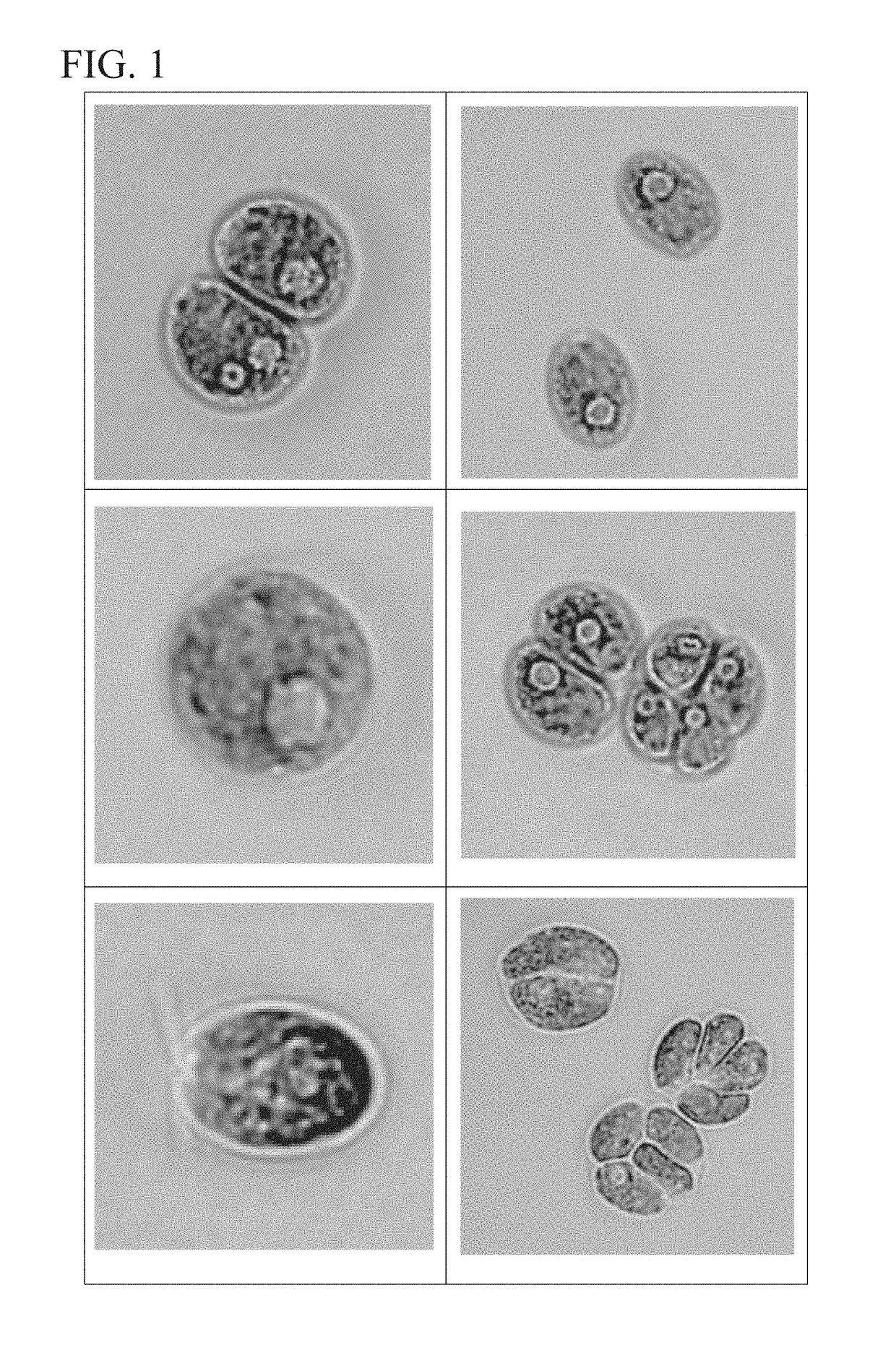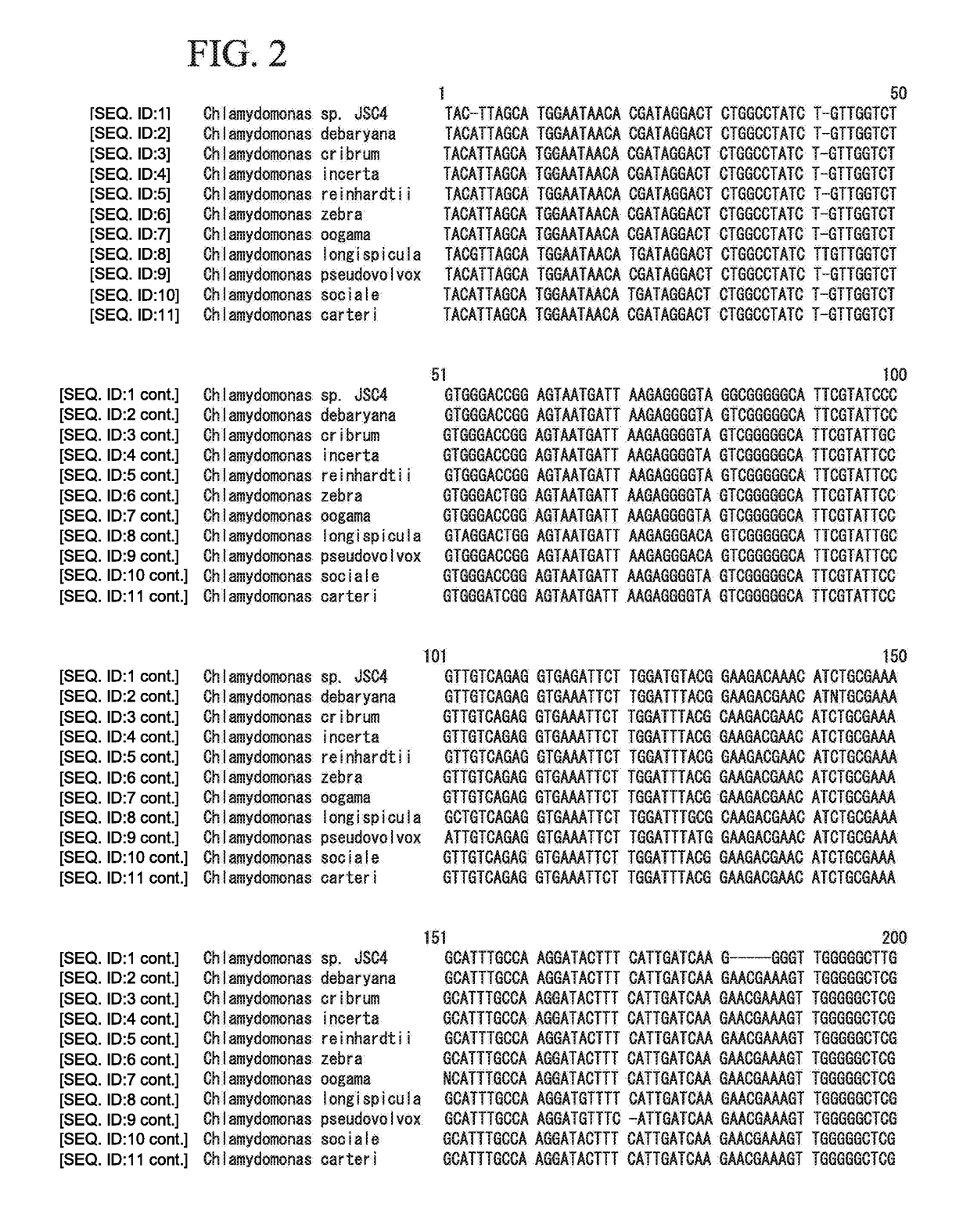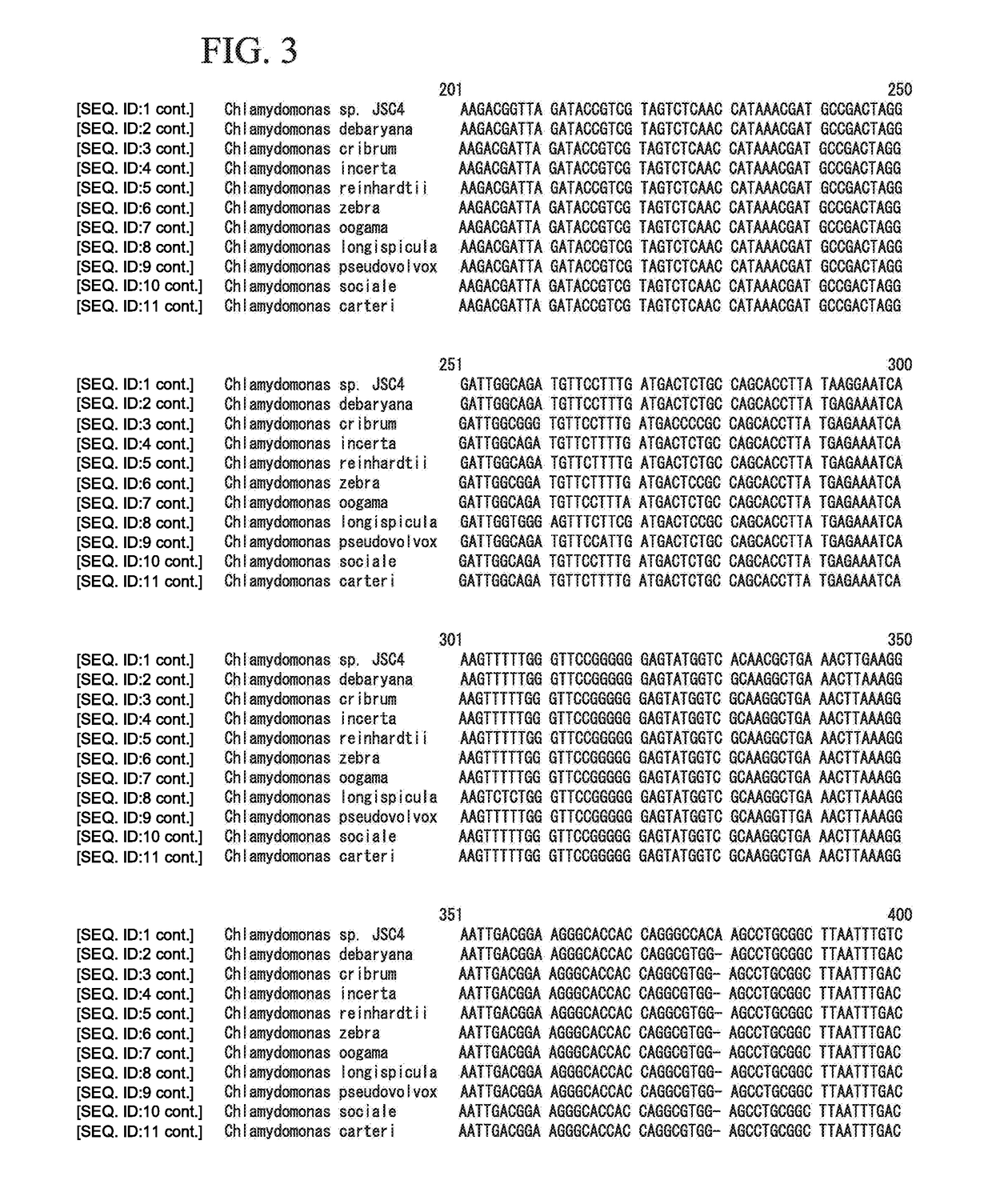Method for generating oil/fat component from chlamydomonas algae
- Summary
- Abstract
- Description
- Claims
- Application Information
AI Technical Summary
Benefits of technology
Problems solved by technology
Method used
Image
Examples
example 1
[0114](Medium Comparison)
[0115]Respectively 1 L of the modified Basal medium, modified Bristol medium, BG-11 medium, modified Bold 3N medium, and modified High Salt Medium (HSM) whose compositions were listed in Table 3 were prepared, added to photobioreactors having a capacity of 1 L, and autoclave-sterilized. Chlamydomonas sp. JSC4 was cultured for 5.7 days under the conditions in which Chlamydomonas sp. JSC4 was inoculated to the respective photobioreactors such that the algae concentration became approximately 100 mg / L, the photobioreactors were continuously irradiated with fluorescent light having an intensity of 200 μmol photons / m2 / sec at room temperature for 24 hours, 50 mL of 2% carbon dioxide-containing air was aerated every minute, and the photobioreactors were stirred using a stirrer at 200 rpm.
[0116]The analysis results of oil / fat components of each culture solution are listed in Table 4. The oil / fat content in an alga body and the lipid productivity per culture solution...
example 2
[0119](Effects of Addition of Sea Salt)
[0120]Respectively 1 L of culture medium in which the amounts of sea salt to be added to the modified Bold 3N medium whose compositions were listed in Table 3 were set as 0.5%, 2%, 3.5%, and 5% (w / v) were prepared, added to photobioreactors having a capacity of 1 L, and autoclave-sterilized. Chlamydomonas sp. JSC4 was cultured for 10 days under the conditions in which Chlamydomonas sp. JSC4 was inoculated to the respective photobioreactors such that the algae concentration became approximately 100 mg / L, the photobioreactors were continuously irradiated with fluorescent light having an intensity of 200 μmol photons / m2 / sec at room temperature for 24 hours, 50 mL of 2% carbon dioxide-containing air was aerated every minute, and the photobioreactors were stirred using a stirrer at 200 rpm.
[0121]In all cases, the content of nitrate in a culture solution was low along with the growth of an alga body and the content thereof became 10 mg / L or less for ...
example 3
[0123](Effects of Cultivation Under Nitrogen-Deficient Condition on Quality of Biodiesel)
[0124]The quality of biodiesel is evaluated by the ratio of unsaturated fatty acids to saturated fatty acids. The content of the saturated fatty acids in biodiesel affects oxidation suppression at a high temperature. Meanwhile, the amount of the unsaturated fatty acids affects the fluidity at a low temperature. The amount of the saturated fatty acids in the biodiesel being the same as the amount of the unsaturated fatty acids in the biodiesel is important for the purpose of providing excellent characteristics at a low temperature and a high temperature for the biodiesel. The profile of fatty acids affects environmental stress caused by the nutrients in a culture medium, the outside temperature, and the light intensity. Among these, the nitrogen-deficient condition is the most important factor that affects the fat metabolism of algae.
[0125]FIG. 6 shows the compositions of fatty acids of Chlamydom...
PUM
 Login to view more
Login to view more Abstract
Description
Claims
Application Information
 Login to view more
Login to view more - R&D Engineer
- R&D Manager
- IP Professional
- Industry Leading Data Capabilities
- Powerful AI technology
- Patent DNA Extraction
Browse by: Latest US Patents, China's latest patents, Technical Efficacy Thesaurus, Application Domain, Technology Topic.
© 2024 PatSnap. All rights reserved.Legal|Privacy policy|Modern Slavery Act Transparency Statement|Sitemap



